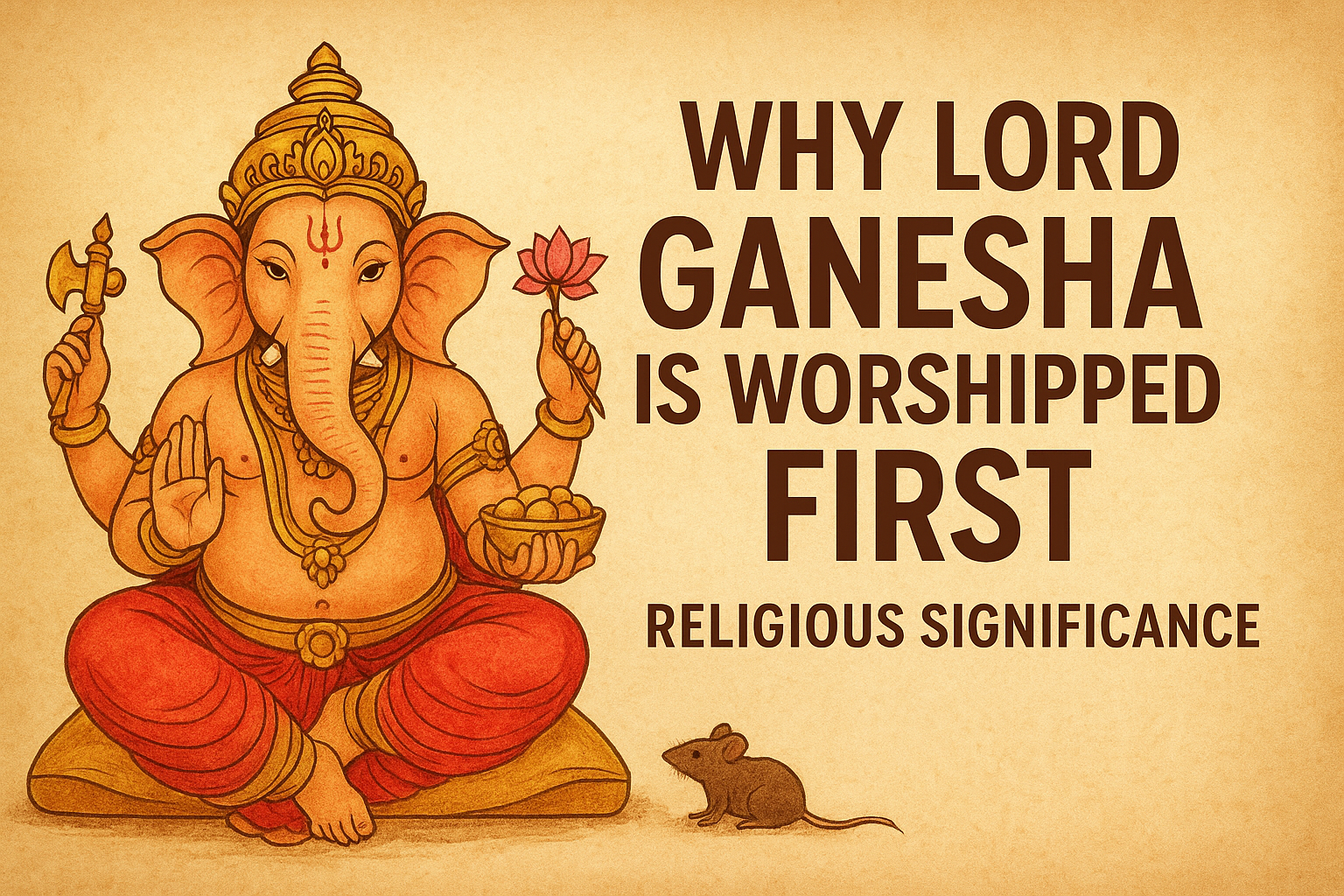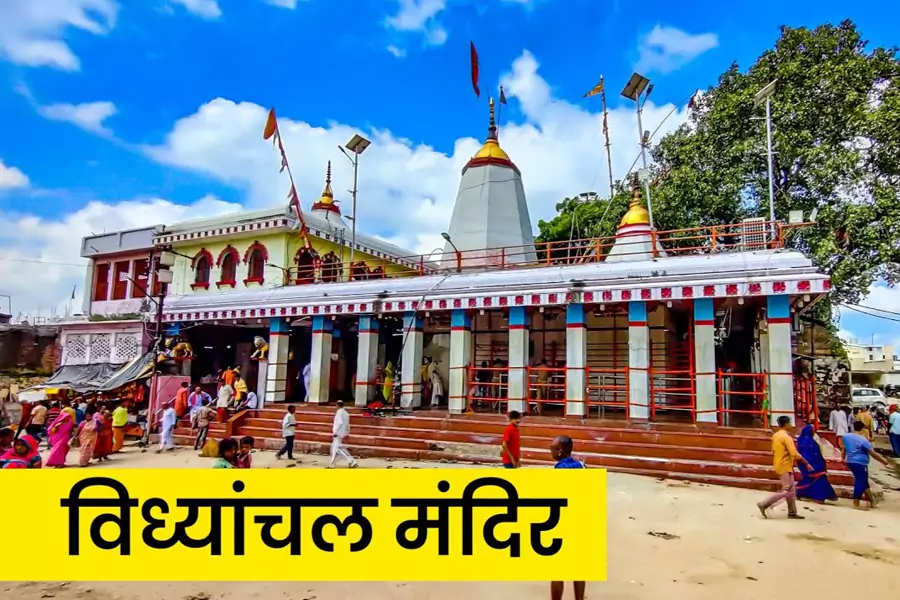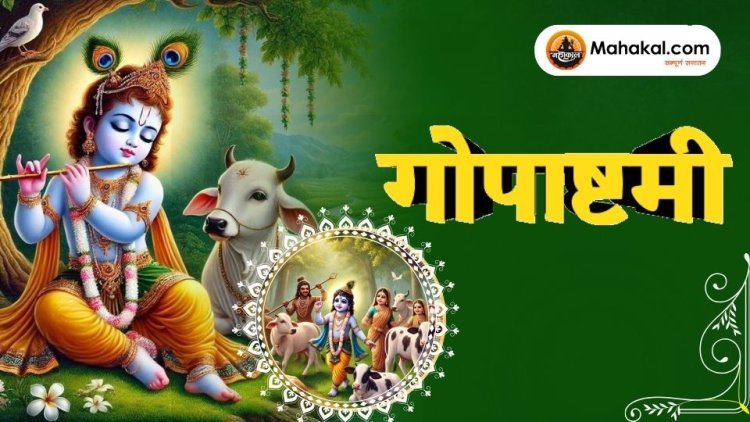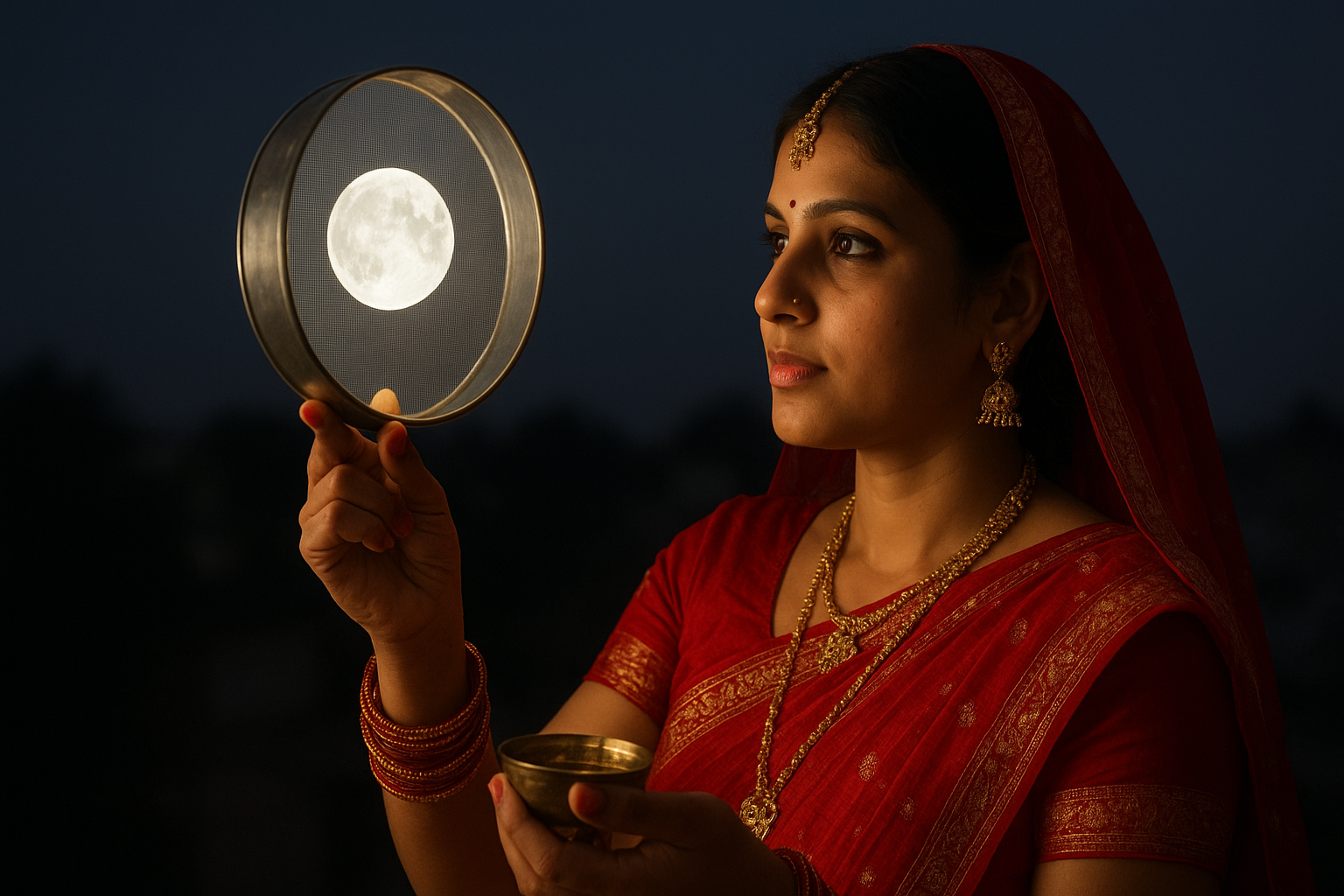Every ceremony, puja, or auspicious event in Sanatan Dharma starts with a request for the blessings of Lord Ganesha, the adored elephant-headed god. Hindus pray to Vighnaharta (the remover of barriers) before asking any other deity for blessings, whether it be for a temple rite, housewarming ceremony, wedding, or even the start of a new business. But why does adoration of Lord Ganesha come first? What spiritual and theological meaning does this ancient custom have? The deep significance, biblical allusions, and symbolism of worshiping Lord Ganesha before all other gods and goddesses are examined in this article.
Who Is Lord Ganesha?
Lord Ganesha, also called Ganapati, Vinayaka, and Vighnaharta, is the son of Lord Shiva and Goddess Parvati. Known for his elephant head, large ears, pot-belly, and small eyes, he is one of the most widely worshipped deities in Hinduism.
- Elephant Head – Symbol of wisdom and foresight.
- Big Ears – Ability to listen to devotees’ prayers.
- Small Eyes – Focus and concentration.
- Large Belly – Ability to digest both good and bad experiences of life.
- Mouse (Mushak) as his Vehicle – Representation of humility and control over desires.
Ganesha is not only worshipped in India but also revered in Nepal, Sri Lanka, Thailand, Cambodia, Indonesia, and many other parts of the world.
Scriptural Significance of Worshipping Ganesha First
1. Vedic References
The Rigveda, one of the oldest scriptures, mentions Ganesha as the lord of categories and the remover of obstacles. The famous Ganapati Atharvashirsha Upanishad describes him as the supreme consciousness.
2. Puranic Legends
Several stories in the Puranas explain why Ganesha is worshipped before all deities:
- The Story of the Divine Race
Once, sages requested Shiva and Parvati to decide which son – Ganesha or Kartikeya – should be worshipped first. Shiva suggested a race around the world. Kartikeya set off on his peacock, but Ganesha, with his wisdom, circled his parents and said, “My parents are my world.” Impressed, Shiva and Parvati declared Ganesha as the first deity to be worshipped. - The Boon from Lord Shiva
According to another legend, when Ganesha got his elephant head after being revived by Shiva, the supreme Lord blessed him, saying: “From now onwards, no puja will begin without invoking you first.”
3. Ganesha in Smritis and Shastras
Smritis and Dharma Shastras prescribe the tradition of beginning all rituals with Ganapati puja. It is believed that ignoring this practice may lead to obstacles in the ceremony.
Symbolic Meaning Behind Worshipping Ganesha First
- Remover of Obstacles (Vighnaharta)
Life is full of difficulties and uncertainties. Before starting anything new, devotees seek Ganesha’s blessings to remove obstacles and ensure success. - Lord of Beginnings
Ganesha symbolizes auspicious beginnings. His presence ensures that the journey, whether spiritual or material, starts on a positive note. - Representation of Knowledge and Wisdom
Chanting “Om Gan Ganapataye Namah” invokes clarity, intelligence, and the ability to make wise decisions. This is essential before undertaking any task. - Balance of Material and Spiritual Life
Ganesha represents harmony between worldly success and spiritual growth. Worshipping him ensures balance in both domains.
Importance of Ganesha Worship in Daily Life
1. In Household Rituals
From Griha Pravesh (housewarming) to marriages, no Hindu ritual is considered complete without Ganapati puja. It is believed to invite prosperity and protect the family from evil forces.
2. In Festivals
- Ganesh Chaturthi – The grand festival celebrating Ganesha’s birth is marked by prayers, processions, and cultural events.
- Diwali – On the day of Lakshmi Puja, Ganesha is worshipped along with Goddess Lakshmi for wealth and prosperity.
3. In Education and Career
Students and professionals begin their studies, exams, and new ventures by invoking Ganesha, the God of Knowledge and Success.
4. In Arts and Culture
Musicians, dancers, and artists traditionally perform Ganesh Vandana before any cultural performance, signifying that every art form is blessed by him.
Psychological and Spiritual Significance
1. Boosts Confidence
Worshipping Ganesha before any new beginning gives psychological assurance that difficulties will be overcome.
2. Encourages Focus and Determination
Meditating on Ganesha’s form or chanting his mantras helps calm the mind, improving concentration and focus.
3. Symbol of Inner Strength
The image of Ganesha sitting calmly, yet powerful, inspires devotees to face life’s challenges with patience and resilience.
Ganesha Mantras and Their Power
- Om Gan Ganapataye Namah – Invokes Ganesha’s blessings for removing obstacles.
- Vakratunda Mahakaya Suryakoti Samaprabha – For protection and success in endeavors.
- Om Ekadantaya Namah – For wisdom and knowledge.
- Om Shreem Hreem Kleem Glaum Gam Ganapataye Vara Varada Sarvajanam Me Vashamanaya Svaha – For prosperity and fulfillment of desires.
Regular chanting of these mantras at the beginning of the day or before important tasks strengthens one’s spiritual energy.
Why Ganesha Before Lakshmi or Shiva?
Many devotees question why Lord Shiva, Ganesha’s father, or Goddess Lakshmi, who stands for riches, are worshipped before him. Symbolism and heavenly hierarchy hold the key to the solution. As the ruler of beginnings and the remover of barriers, Ganesha sets up the ideal environment for other gods’ benefits to materialize. Even the blessings of other gods might not work as intended without Ganesha’s grace.
Ganesha in Modern Times
In today’s fast-paced world, the tradition of invoking Ganesha holds even greater relevance:
- Business Ventures – Entrepreneurs place Ganesha idols in offices to ensure smooth operations.
- Education – Students worship Ganesha before exams for wisdom and clarity.
- Technology & Innovation – Even in modern industries, many inaugurations start with Ganapati puja.
This shows that while times change, the spiritual wisdom behind Ganesha worship remains eternal.
Stories That Highlight Ganesha’s Significance
The Fruit of Knowledge
Once, Narada Muni brought a divine fruit to Kailash and said it should be given to the son who proved most deserving. Shiva and Parvati asked their sons, Kartikeya and Ganesha, to race around the world. Kartikeya flew off, but Ganesha circled his parents, declaring them his world. This act of wisdom won him the fruit and established his position as the first deity to be worshipped.
Protection of Devotees
Many folk tales narrate how Ganesha protected his devotees from danger, emphasizing his role as a guardian and remover of hindrances.
Rituals of Ganesha Worship
- Purification – The devotee bathes and purifies the worship space.
- Sankalpa (Intention) – Setting a positive intention before worship.
- Ganapati Puja – Offering flowers, incense, sweets (especially Modaks), and chanting mantras.
- Aarti and Prasad – Completing the puja with aarti and distributing offerings.
These rituals symbolize clearing obstacles not just externally but also within the devotee’s mind.
Universal Appeal of Ganesha
The adoration of Ganesha is not exclusive to Hinduism. He is revered in Buddhism as a wisdom-wielding and obstacle-removing deity. Ganesha is widely regarded as a heavenly protector, as seen by the statues of him found in ancient temples throughout Southeast Asia.
Conclusion
The custom of worshiping Lord Ganesha first is a profound spiritual practice based on wisdom, symbolism, and divine blessings rather than merely being a religious rite. He is the embodiment of wisdom and wealth, the king of beginnings, and the remover of barriers. According to scripture, mythology, and millennia of custom, calling to Ganesha before beginning any task guarantees a successful outcome. Beginning every task in our lives with his memory can help us overcome obstacles, gain clarity, and lead to fulfillment and success. Worship to Lord Ganesha serves as a timeless reminder that the real cornerstones of any auspicious beginning are knowledge and dedication.












Leave a Reply